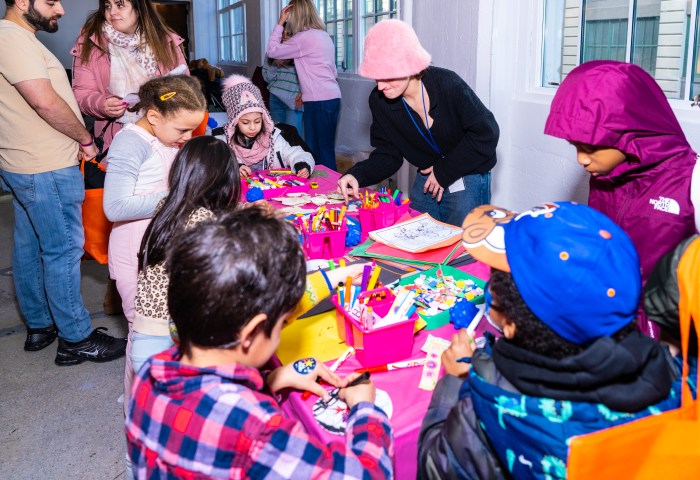In the fabulous 2,100 square foot apartment that Joe Baio and his wife Anne Griffin share in the Police Building on Centre Street in Lower Manhattan, there are 320 photographs hanging on the walls, most of the walls stretch to 16 feet high — and those images are just a portion of the 6,000 that are in their collection.
A friend determined that if you averaged out his purchases since Baio began collecting in earnest, he’s obtained a photo per day since the late 90s.
But this collection is not about investing, proving any kind of point or having bragging rights (although he’s certainly got some pretty noteworthy pieces).
A trial lawyer specializing in civil litigation, Baio took up photography in the mid-80s when his kids were born. Wanting to learn the craft, he began taking classes and started at the top, studying with noted photographers Larry Fink, Nan Goldin and Sally Mann, to name a few.
Although he was not previously an art collector ( unless you count those Marvel comics he amassed as a kid), he began by buying up portfolios that were frequently bought by others as investments — the idea being that you got the collection of 15 or so photos at a good price, then donated them later to a museum or other institution, and received a decent tax break for their current value.
“The thing was, once I bought them I didn’t want to donate them!” he admitted. Now, however, he donates around 100 pieces a year, most recently to Notre Dame.
“I started out buying from auctions before I went to galleries,” Baio recalled. “Then I started to go to every gallery and all the AIPAD (an art fair specializing in photography) shows. I started collecting voraciously in 1998. Photography prices were still relatively modest.”
Although he liked the gallerists and learned from them, he didn’t let anyone tell him what to buy. “I relied on my instinct,” he says.





His intuition led him to accrue a collection of famous names — Robert Frank, Brassai, Diane Arbus, William Klein, Helen Leavitt, Duane Michals, Bill Brandt, Loretta Lux and “every French photographer” as well as up-and-comers, unknowns and examples of work that was produced for purely functional reasons.
In the mix are 1850 portraits of orphans that were taken for record keeping purposes in Leicester, England, for example.
It wasn’t long after he began collecting that a theme emerged: children and adolescents.
“I was trying to learn how to be a photographer of my own children,“ Baio explains, “and I was inspired by the works of others.”
All of the work on display fits into that theme. In addition to those parameters, every wall has its own theme, such as circles, cars, swings, reflections, snakes, twins, religion and the stairwell features images of — not surprisingly — kids on stairs. A wall in his previous abode was arranged alphabetically, “from Atget to Zola.”
As if that’s not enough, the couple previously changed the entire exhibit once a year. Baio frequently jots down ideas for new themes and then spends 10 days with professional art hangers changing the whole shebang prior to a party they host for gallerists and artists.





The last one was just before the lockdown and although at the moment they don’t have a definite date for the next one they are thinking about it.
His collection occasionally gets seen outside his home. There are about 120 in his law office in Midtown and a group of 932 pieces, including a record-setting Atget, were sold by Christie’s as a result of his divorce back in 2010.
A much happier display was mounted at AIPAD in 2018, where Baio hung 300 pieces from the collection, which prompted Suzanne Revy to write in whatwillyouremember.com that “Baio has amassed a unique and spectacular history of photography filtered through the lens of childhood.”
Loring Knoblauch noted in Collector Daily that the exhibit was “the one single thing not to miss” at the fair. He praised the collector’s “deliberate egalitarianism” and observed that Baio is “wholly democratic in his taste … his eye simply driven by the inherent power of the imagery.”
In order to become part of the collection, “the image has to wrestle me to the ground, take my breath away,” Baio muses: “It all has to do with the joy of learning, searching, finding, securing, collating, curating, organizing, hanging … it’s all just for fun. I get so much out of it.”
































